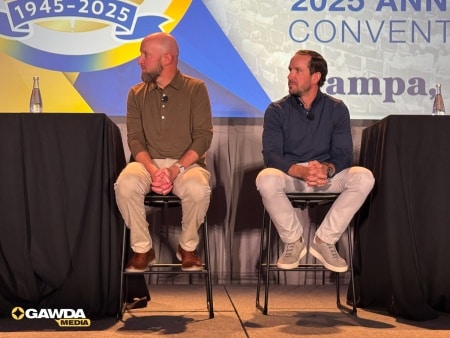DOT Secretary Testifies on Infrastructure Priorities. Secretary of Transportation Pete Buttigieg testified on March 25 before the House Committee on Transportation and Infrastructure on the administration’s priorities for infrastructure legislation.
The secretary’s testimony did not include any specifics on the administration’s approach to transportation infrastructure programs or how to finance them. (President Biden separately said that the administration’s infrastructure package will be made available March 31.) But Secretary Buttigieg said that the country faces a trillion dollar backlog of needed repairs and improvements in infrastructure.
The prepared testimony and response to questions from committee members had repeated themes of addressing climate change, environmental justice, and heavy duty vehicle electrification. Buttigieg said that in the U.S. “transportation is the leading contributor to climate change.” He suggested this is the time to move the country to “net-zero greenhouse gas emissions, building a national [electric vehicle] charging network, and investing in transit, transit-oriented development, sustainable aviation, and resilient infrastructure.”
He also spoke of decarbonization of freight movements and the need to shift freight among modes (presumably from trucks to rail or waterways) to reduce emissions.
As to how to pay for new infrastructure investments, Secretary Buttigieg referenced the possibility of a transition from a fuel tax based funding approach for the Highway Trust Fund to one based on a vehicle miles traveled tax, but offered no specifics.
DOT Issues Rule Rescinding Trump-Era Rules on Rulemaking, Guidance and Enforcement. The U.S. Department of Transportation has released a final rule that rescinds most of a December 27, 2019 DOT final rule on the agency’s rulemaking, guidance and enforcement policies. 84 Fed. Reg. 71714.
The 2019 final rule had established a Regulatory Reform Task Force within DOT to evaluate proposed and existing regulations and make recommendations to the Secretary regarding their promulgation, repeal, replacement, or modification, consistent with applicable law and Executive Orders. In addition, the final rule set out procedures for developing rulemakings, issuing guidance documents, and providing due process protections to regulated entities during an enforcement proceeding.
The Biden Administration has rescinded most of the Trump-era final rule without notice or public comment. DOT claims that notice and comment were not required because many of the policies and procedures codified in the 2019 final rule were prompted by executive orders that have since been revoked by a subsequent executive order from President Biden. DOT further asserts that the rescinded requirements were merely internal agency procedural rules that are not subject to the Administrative Procedure Act requirements for public participation.
DOT also claims that the due process protections afforded to regulated entities in the rescinded rule are still effective based on judicial decisions under the APA, and need not be repeated in agency regulations.
Truck Safety Advocate Outlines re Legislative Aims. In a meeting with GAWDA Government Affairs Consultant Rick Schweitzer, John Lannen of the Institute f or Safer Trucking outlined several legislative proposals that his organization will pursue in the current Congress. These proposals are scheduled to be introduced as bills in the House and/or Senate in the next few weeks; many of them might be incorporated into the infrastructure bill or highway reauthorization legislation to be considered this year.
Automated Electronic Braking. The bill would mandate AEB technology to be included as a collision avoidance mechanism on all newly-manufactured Class 7 and 8 trucks (i.e., those over 26,000 lbs. GVW). Some 70-80% of new trucks on this category already meet this requirement. The legislation would also direct DOT to complete a study on whether to mandate similar technology for Class 3-6 trucks. Lannen indicated a prior report from the National Highway Traffic Safety Administration estimated the additional cost of such technology at approximately $300 per unit.
Speed Limiting Devices. The bill would mandate that speed limiting devices would be set at no higher than 65 mph. If the vehicle has both adaptive cruise control and automated electronic braking, however, the speed limiter could be set as high as 70 mph.
Minimum Liability Insurance. The legislation would increase the minimum liability coverage of $750,000 for for-hire motor carriers based on the medical cost of inflation since the levels were se tin 1085. This would mean a new minimum of over $2 million. The minimum would be indexed fro inflation every five years thereafter. Lannen indicated that these increases would not apply to hazardous materials carriers, however.
Underride Guards. The legislation would require a rulemaking to strengthen rear underride guards for straight trucks and trailers and also to establish new requirements for side underride guards. There would be no requirements for underride guards in the front of commercial motor vehicles, however.
Chemical Safety Board Releases FY 2020 Impact Report. The U.S. Chemical Safety Board has released its Fiscal Year 2020 Impact Report outlining the Board’s efforts over the year. The CSB is a scientific investigative organization, established by Congress to investigate and determine chemical accident causes, issue safety recommendations, study chemical safety issues, and evaluate the effectiveness of other government agencies involved in chemical safety. It is not an enforcement or regulatory body, but is modeled on the National Transportation Safety Board.
In FY 2020 the CSB investigated seven accidents and completed one investigation report. It also released three incident animations, two safety videos and one safety message that are available for public viewing on the agency website, csb.gov, and on YouTube.




